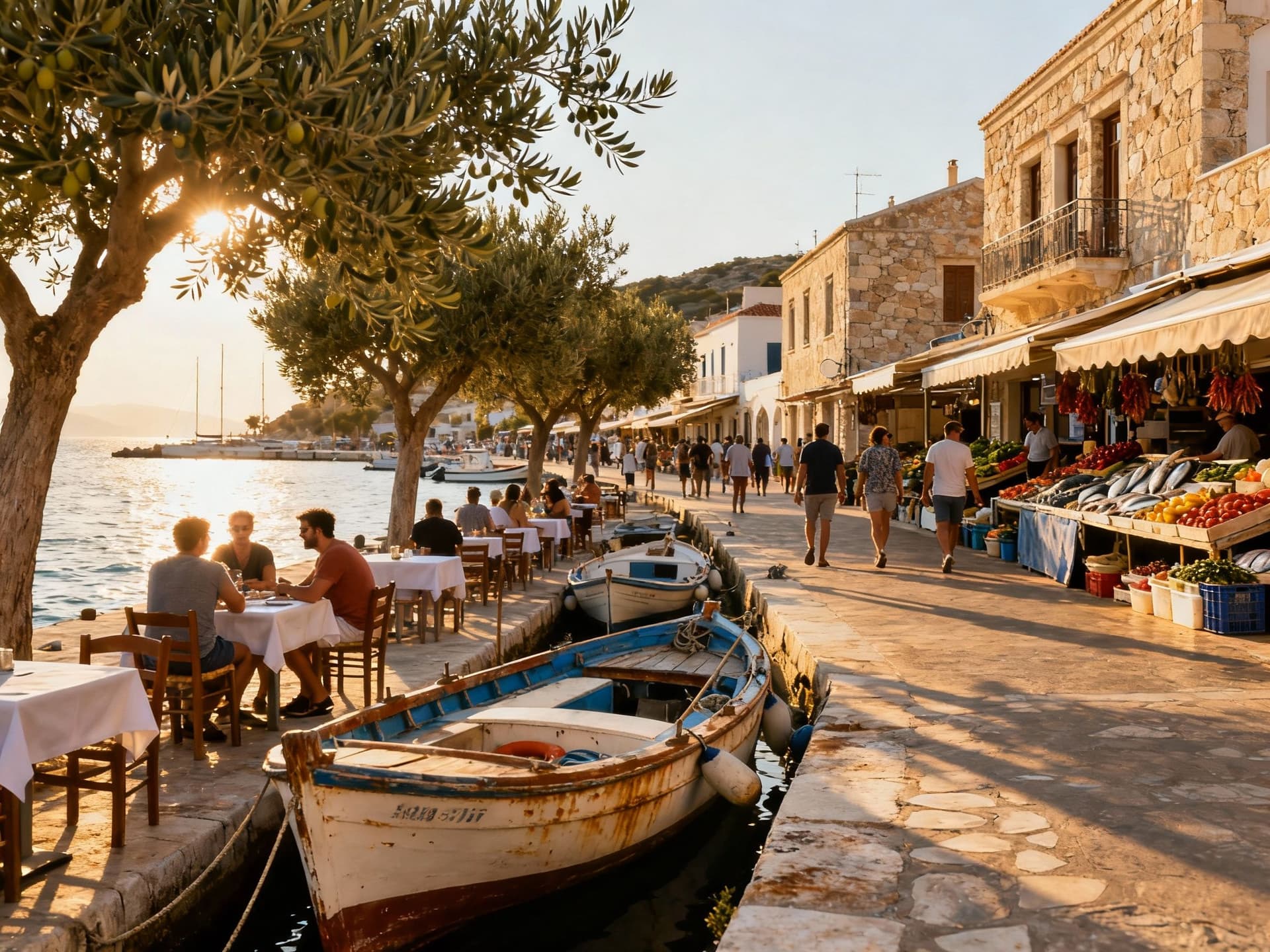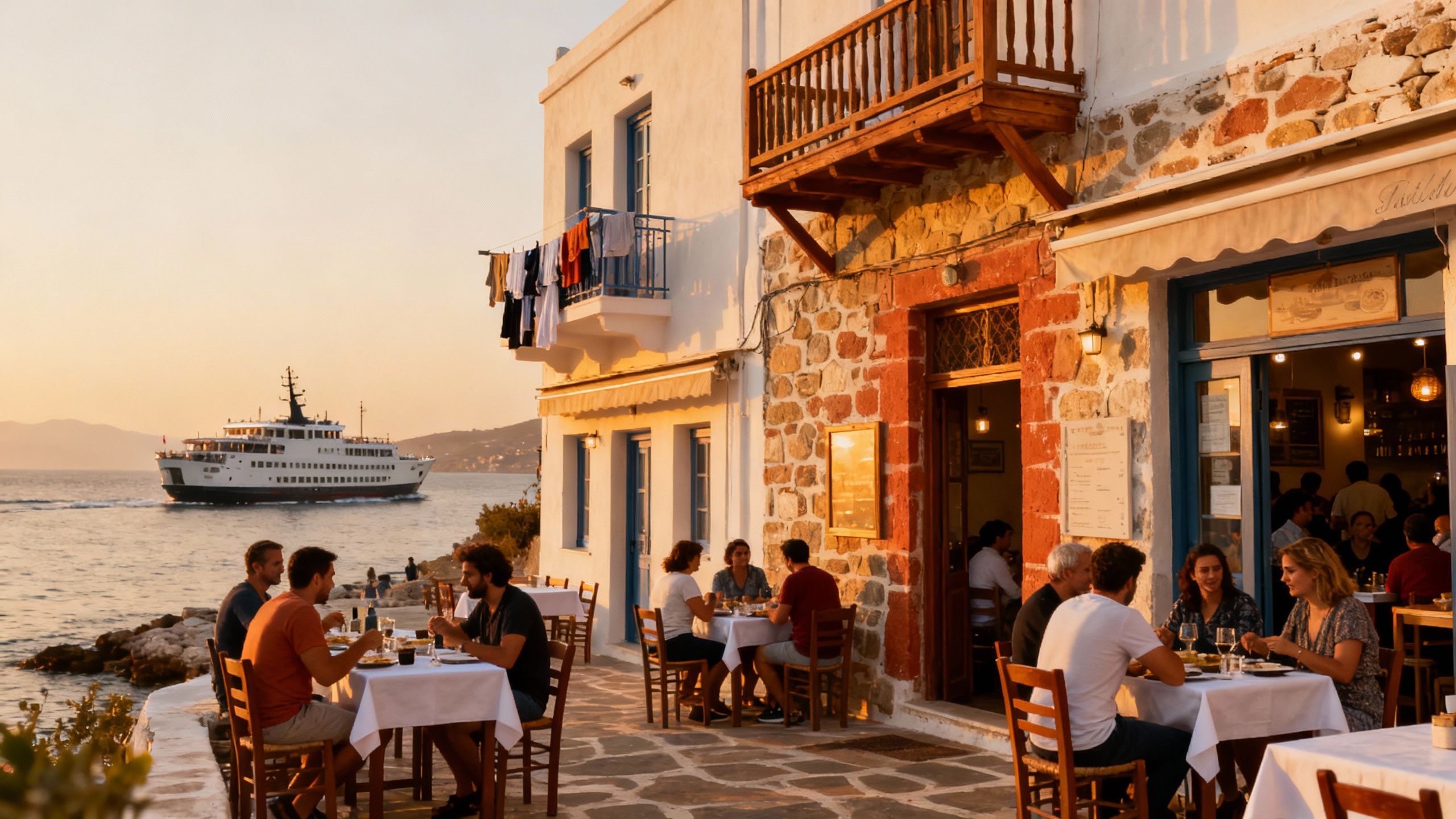Limassol’s Hype vs. Cyprus’ Quiet Value
Coastal buzz and village calm split Cyprus’ market — buy the life you want, but use Central Bank indices and local transaction data to avoid coastal hype and find real value inland or overlooked towns.
Imagine starting your morning with an espresso on Limassol’s Molos promenade, then driving 25 minutes inland to a stone village where neighbours still greet you by name. Cyprus can feel like two countries at once: sunlit coastal energy and quiet, slow-moving inland life. That split is the key to understanding the market — lifestyle attraction concentrates demand, but value often lives where the island’s rhythm slows.
Living the Cyprus life

Cyprus mornings are a low, lovely ritual: bakeries puffing warm pita in Larnaca, fishermen unloading catch at Latchi harbour, and cafés in Nicosia’s old town where conversation drifts from politics to football. The island’s climate — hot, dry summers and mild, green winters in the Troodos foothills — shapes how people live: outdoor terraces, late dinners, and weekend hikes to waterfalls or vineyards. For buyers, those rhythms translate directly into what neighbourhoods deliver: beachside sociability, village privacy, or a commuter-friendly city pulse.
Limassol and the coastal pulse
Limassol is energy and capital: luxury marinas, boutique hotels, and a booming international school scene attract professionals and second‑home buyers. Streets like Anexartisias bustle with late-night cafés while the Molos park becomes an evening meeting place. That heat lifts prices — and perception — but it also concentrates liquidity and new development, which matters if you plan short-term rental or rapid resale.
Paphos, Polis and quieter coastal alternatives
Paphos and the Polis/Latchi pocket offer a gentler coastal life: mornings at To Steki or Debbie’s coffee by the marina, afternoons at quiet coves. These areas attract retirees and families seeking community rather than nightlife, and you’ll find restored stone houses and small, well‑placed developments instead of high‑rise blocks. For many buyers, that tradeoff — calm over glitz — is the real reason to choose Paphos over Limassol.
- Lifestyle highlights: Molos promenade (Limassol), Latchi harbour cafés (Polis), Old Nicosia Thursday market, Troodos vineyard weekends, Agios Georgios beach swims
Making the move: lifestyle-led, data-backed

Dreams meet spreadsheets the moment you start looking at offers. Recent Central Bank reporting shows Cyprus’ residential price growth slowing in late 2024, and national transaction value hit record volumes in 2024 — an indicator of both scale and shifting momentum. So treat lifestyle first, then layer market data: where people live determines day-to-day happiness, but macro trends determine cost, liquidity and risk.
Property types and how they shape life
Seaside apartments give you morning swims, easy rentals, and small‑maintenance living; inland stone houses offer space, gardens and community rhythms that reward long-term settling. New developments in Limassol and Larnaca emphasise amenities and security — ideal for families and remote workers — while village restorations are for those who want slow mornings and a strong local tie. Match the property’s lived experience to the life you want, not just the price per square metre.
- Six practical steps that preserve lifestyle value
1) Spend a week living like a local in two areas before you bid; 2) Ask agents for rental comparables if you want short‑term yield; 3) Check bank valuation vs asking price — cash buyers set local peaks; 4) Prioritise walkability and year‑round services, not just summer appeal; 5) Inspect for heat management (insulation, shutters) — summer comfort is essential; 6) Use a local lawyer to validate titles and permissions early.
Insider knowledge: expat truths and market red flags
Expat experience converges on a few repeat truths: cash is king in coastal hotspots, bank valuations can lag asking prices, and off-season life reveals whether a place is community or caravan. Reports and market commentary note rising foreign interest but a recent deceleration in price growth. Practically, that means good buys exist — you just need local timing and patience.
Cultural cues that affect property life
Cypriots value relationships and local reputation; a friendly taverna owner or concierge can accelerate integration. Learning basic Greek phrases opens doors and your social calendar. Do not underestimate seasonal rhythms — towns hum in summer and settle deeply in winter — and that affects rental demand, maintenance cycles and neighbours’ expectations.
Long-term lifestyle and market sustainability
Think five years ahead: will your neighbourhood gain infrastructure, or is it a one‑season wonder? Local plans for projects such as ARP developments and airport upgrades influence resale and rental prospects. Match your horizon — buy for life where you intend to live, or buy for liquidity where infrastructure growth is real and documented.
- Red flags buyers should watch: seller pressure to accept cash-only offers, bank valuation gaps over 15%, unclear building permits for extensions, over-reliance on summer tourists for rental income
A Cypriot move transforms daily life: from weekend mezze with neighbours to grape‑stained walks through vineyards. To turn that dream into a stable purchase, combine the pleasures — food, sea, festivals — with data: check Central Bank indices, recent transaction volumes and district performance. Use a local agency with deep neighbourhood roots to preserve the life you bought and protect the investment.
Next steps: visit both the weekend market and midweek life, ask your chosen agent for recent sales documents in the exact street, secure a lawyer before offering, and budget for the common valuation gap between bank survey and asking price. If you love village silence, look inland; if you want connectivity and rental liquidity, lean coastal. Either way, buy the life first, the asset second — and let local data keep you honest.
Norwegian market analyst who relocated to Mallorca in 2020. Focuses on data-driven market insights and smooth relocation for international buyers.


